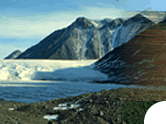BARCODE PROTOCOLS
Barcodes
have been placed onto the field data sheets prior to shipment.
Attach barcodes to vials holding the extracted material
corresponding to the litterbags, treatment or control.
TREATMENT LITTER BAGS
- There are 8 barcodes for each sampling interval,
2 for each plot number.
- Place the 2 corresponding barcodes
onto the corresponding vial that will hold the extracted
fauna.
e.g. for Tasmania, sampling interval 1, plot
no. 4. treatment = barcode TAS14T.
Two barcodes are
required on the vial so that if one barcode comes off
the vial the other one will still identify the material.
LITTERBAG COLLECTION AND PROCESSING
- Litterbags should be photographed prior to collection
- The
surface of bags should be carefully cleaned of adhering
soil, living plant parts (roots or moss), rock fragments,
etc., immediately before collection.
- Retrieved bags
will be placed gingerly in a plastic ziplock bag, sealed,
and carefully (without much disturbance) returned to
the laboratory. It is crucial to ensure that decomposing
materials do not fragment and fall out of the bags during
retrieval or before processing. Any fragmentation or
loss of material must be documented on the data sheet
for each sample.
- All bags should immediately be weighed
to a thousandth of a gram and then placed gently on a
Tullgren funnel (see extraction procedure below).
- Following
each faunal extraction, treated litter should be oven
dried at 55ŠC
until the mass is stable, weighed to the nearest thousandth
of a gram, then shipped to the NREL for appropriate
chemical analyses as outlined in Harmon et al (1999)
and archived on-site due to quarantine restrictions.
LITTER EXTRACTION PROTOCOLS
- Install funnel by joining the black laminated circle
at the dotted line.
- Ensure that the dull side is the
innermost side (this is the most waterproof side in
case litter is wet).
- Fix with adhesive tape along the
join.
- Join white cardboard with adhesive tape at dotted
line. This makes the collar for the funnel to sit in.
- Turn funnel upside down, sit collar onto funnel and
secure funnel to collar with adhesive tape. When turned
right side up the funnel should be stable and level in
the collar.
- Fill vial with 95% alcohol.
- Attach barcodes to vial.
- Place vial on a stable surface.
- Place the funnel and
collar over the vial so that the hole in the funnel
is directly over the vial.
- Place litter bag horizontally
into funnel top.
- Bag does not need to be cut open (what crawled in
will crawl back out).
- Place light (40watt incandescent
globe) directly above funnel 19cm above litter bag.
- Leave
light on and in position for 5 days.
- After 5 days remove
the light and funnel, place lid on vial.
- Send all extracted
material to BioTrack.
- Label parcel for customs as DEAD
INVERTEBRATES IN ALCOHOL.
GLIDE
Invertebrate Extraction Set-up
